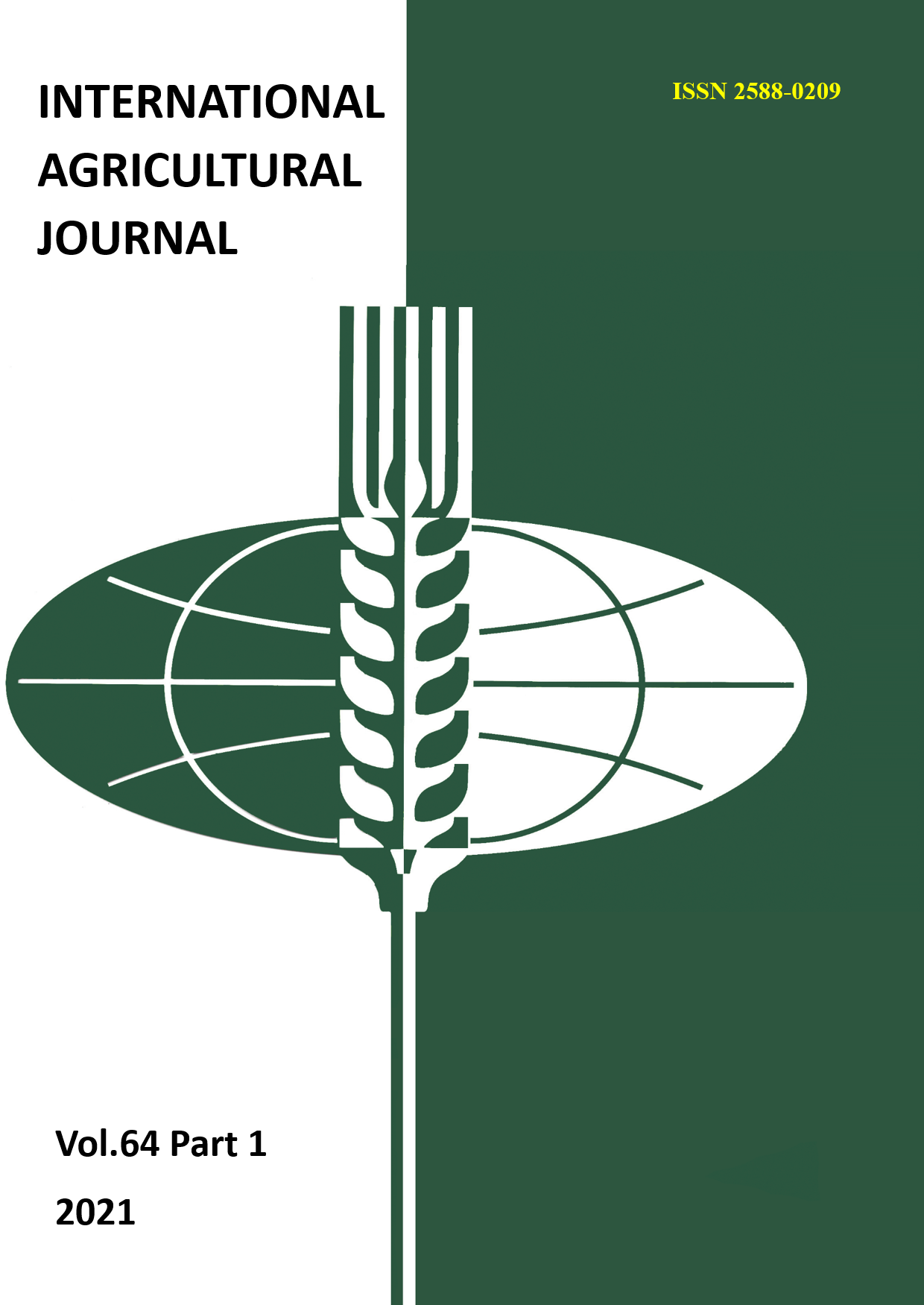SEARCH FOR OPTIONS FOR CHANGING THE OPERATION OF THE KRAS-NODAR RESERVOIR TAKING INTO ACCOUNT THE GROWING SHORT-AGE OF WATER RESOURCES IN THE KUBAN RIVER BASIN
Main Article Content
Abstract
The Krasnodar reservoir is intended for a complex purpose, one of the main tasks of which is the flood control function. In accordance with the current regulatory documents, at the time of putting the reservoir into operation, it corresponded to the 2nd class. The flood capacity and the flood passing regime made it possible to pass the standard flood of 0.1% of availability. After the tightening of requirements for the safety of hydraulic structures in the late 1980s, the reservoir had to be converted to class 1 facilities, i.e. should pass 0.01% of flood availability in an accident-free mode. The reservoir carries out seasonal regulation of the river flow. Kuban, which means the annual drawdown of the reservoir up to ULV and its subsequent filling by the beginning of the growing season, because irrigation of agricultural crops is the main function of economic activity and the most water-intensive. That is, annually, by the end of the growing season, up to 75% of the reservoir basin area is without a layer of water. If before 1992 this period was 4 months, of which no more than half of moisture-loving plants accounted for the active growing season, then after the decrease in the NPC it increased by 6 and 4 months, respectively. For 4 months of active growth, reeds, willows and other moisture-loving vegetation have time to grow by 80-100 cm and do not die during the subsequent filling of the reservoir, i.e. its tops are above the water even in the case of NPU. This situation has led to an increase in the intensity of overgrowth in shallow water areas. Considering the shortage of water resources in the Kuban River basin, changing the discharge regime is practically impossible due to the fact that at present the volume of irreversible runoff from the Kuban was exceeded by 4.2 times in comparison with the permissible. Necessary releases into the lower reach of the reservoir are carried out in full compliance with the rules for the use of water resources and there are no additional volumes of water that would allow changing (increasing) discharges. Therefore, changing the discharge regime even while saving water resources is impossible.
Article Details
References
2. Bandurin, M.A. Chislennoe modelirovanie ob"emnogo protivofil'tratsionnogo ge-otekstil'nogo pokrytiya s izmenyaemoi vysotoi rebra / M.A. Bandurin, V.A. Bandurin // Inzhe-nernyi vestnik Dona. – 2013. – № 4 (27). – S. 46.
3. Abdrazakov, F.K. Problemy upravleniya meliorativnym pod kompleksom na regio-nal'nom urovne / F.K. Abdrazakov, A.YU. Smetanin // Agrarnyi nauchnyi zhurnal. - 2011. - № 3. - S. 47-50.
4. Besfamil'naya, E.V. Sovershenstvovanie metodov razvitiya retsiklingovykh tekhnolo-gii utilizatsii promyshlennykh i bytovykh otkhodov / E.V. Besfa-mil'naya, I.P. Bandurina // Inzhe-nernyi vestnik Dona. – 2015. – № 2-2 (36). – S. 57.
5. Bandurin, M.A. Obosnovanie prodleniya sroka ehkspluatatsii nesushchikh konstruktsii sbornykh vodopod"emnykh nizkonapornykh shchitovykh plotin / M. A. Bandurin, I. P. Bandu-rina // Inzhenernyi vestnik Dona. – 2014. – № 2 (29). – S. 102.
6. Volosukhin, V.A., Numerical analysis of static strength for different damages of hydrau-lic structures when changing stressed and strained state / V.A. Volosukhin, M.A. Bandurin, V.V. Vanzha, A.V. Mikheev, Y.V. Volosukhin // Journal of Physics: Conference Series. – 2018. – T. 1015. – S. 042061.
7. Bandurin, M.A. The efficiency of impervious protection of hydraulic structures of irri-gation systems / M.A. Bandurin, V.A. Volosukhin, I.F. Yurchenko // Advances in Engineering Research. – 2018. – S. 56–61.
8. Volosukhin V.A. Metody nerazrushayushchego kontrolya pri modelirovanii tekhniche-skogo sostoyaniya zhelezobetonnoi oblitsovki vodoprovodyashchikh kanalov / V.A. Volosukhin, M.A. Bandurin // Nauka i bezopasnost'. – 2012. – № 5. – S. 9–17.
9. Ol'garenko, V.I. Kompleksnaya otsenka tekhnicheskogo urovnya gidromeliorativnykh sistem / V.I. Ol'garenko, G.V. Ol'garenko, I.V. Ol'garenko // Melioratsiya i vodnoe kho-zyaistvo. – 2013. – № 6. – S. 8-11.
10. Kireicheva, L.V. Modeli i informatsionnye tekhnologii upravleniya vodopol'zo-vaniem na meliorativnykh sistemakh, obespechivayushchie blagopriyatnyi meliorativnyi re-zhim / L.V. Kireicheva, I.F. Yurchenko, V.M. Yashin // Melioratsiya i vodnoe khozyaistvo. – 2014. – № 5-6. – S. 50-55.
11. Yurchenko, I.F. Risk assessment of land reclamation investment projects / I.F. Yurchenko, M.A. Bandurin, V.V. Vanzha and other // Advances in social science, education and humanities research Proceedings of the International Conference Communicative Strategies of Information Society. – 2019. – P. 216-221.
12. Besfamil'naya, E.V. Sovershenstvovanie metodov razvitiya retsiklingo-vykh tekhno-logii utilizatsii promyshlennykh i bytovykh otkhodov / E.V. Besfamil'naya, I.P. Bandurina // In-zhenernyi vestnik Dona. – 2015. – № 2-2 (36). – S. 57.
13. Bandurin, M.A. Metody modelirovaniya napryazhenno-deformirovannogo sostoya-niya dlya opredeleniya ostatochnogo resursa zhelezobetonnogo konsol'nogo vodosbrosa pri razlich-nykh granichnykh usloviyakh / M.A. Bandurin, V.A. Bandurin // Inzhenernyi vestnik Dona. – 2013. – № 4 (27). – S. 109.
14. Yurchenko, I.F. Reclamation measures to ensure the reliability of soil fertility / I.F. Yurchenko, M.A. Bandurin, V.A. Volosukhin, V.V. Vanzha, A.V. Mikheyev // Advances in En-gineering Research. – 2018. – P. 62-66.
15. Bandurin, M.A. The efficiency of impervious protection of hydraulic structures of irri-gation systems / M.A. Bandurin, V.A. Volosukhin, I.F. Yurchenko // Advances in Engineering Research. – 2018. – P. 56-61.

